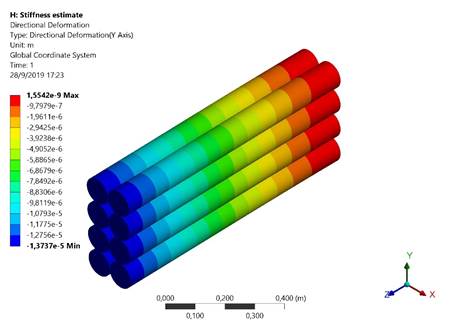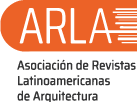Replacement of reinforced concrete by bamboo in social dwellings in Ecuador, using moment connections
DOI:
https://doi.org/10.13140/RG.2.2.23895.39845Keywords:
bamboo buildings, bamboo connections, bamboo nodes, bamboo jointsAbstract
This research article is based on a theses theme developed in Ecuador, which main objective was to replace social houses built in reinforced concrete with bamboo in order to decrease construction costs and to be collaborative with environment. Normally, structural nodes for bamboo buildings are considered pinned between beams and columns according to structural analysis normative, but nevertheless, in construction, nodes present kind of continuity, due to the use of concrete or mortar inside the bamboo elements, also, reinforcing steel. In this research, an analytical model for one kind of node were simulated in order to demonstrate the bending moments transfer, and also, demonstrated the viability of the substitution of the reinforced concrete by bamboo in social dwellings in Ecuador. Results indicate that all joints transmit bending moments.
Downloads
References
C. A. Rodríguez Alonso y E. Morales Días, «El Bambú como material estructural: análisis de un caso práctico», 2008
A. Texeira Alves, «Painéis de bambu para habitações econômicas: avaliação do desempenho de painéis revestidos com argamassa», Brasilia, 2006
G. Serrano-Barba, et al., «Vivienda emergente y sustentable con sistemas estructurales de bambú» Guadalajara, 2016
B. Torres, M. Segarra, & L. Bragança, «El bambú como alternativa de construcción sostenible» EXTENSIONISMO, INNOVACIÓN Y TRANSFERENCIA TECNOLÓGICA. CLAVES PARA EL DESARROLLO, V 5, pp. 389-400, 2019
D. Andrade & M. Asimbaya, «Análisis comparativo de sistemas constructivos en un módulo de departamentos tipo de interés social empleando caña guadúa Angustifolia Kunth y hormigón armado, ubicado en la parroquia Guale, cantón Paján, de la provincia de Manabí» Quito, 2019
P. Aguilar, «Análisis del comportamiento estructural del bambú del tipo "Guadúa Angustifolia Kunth" como material de construcción en sustitución del hormigón armado» Quito, 2019
N. Chamorro & L. Sebastián, «Desarrollo de losas con caña de guadua angustifolia y análisis comparativo estructural y económico con los sistemas de losas tradicionales utilizados en nuestro medio» Quito, 2013
M. Duarte, V. Bravo, J. Morales & J. Arias, «Estructuras de Guadúa [GaK]» Ministerio de Desarrollo Urbano y Vivienda [MIDUVI], Quito, 2016
L. Villegas, R. Morán & J. García, «A new joint to assemble light structures of bamboo slats» Construction and Building Materials, 61-68, 2015
T. Paraskeva, N. Pradhan, & E. Dimitrakopoulos, «Monotonic loading testing and characterization of new multi-full-culm bamboo to steel connections» Construction and Building Materials, 201, 473-483, 2019
B. Lefevre, R. West, P. O'Reilly, & D. Taylor, «A new method for joining bamboo culms» Engineering Structures, 190, 1-8, 2019
G. Tang, L. Yin, Z. Li, Y. Li & L. You, «Structural behaviors of bolted connections using laminated bamboo and steel plates» Structures, 20, 324-339, 2019
R. Morán, J. Muñoz, H. Silvac & J. García, «A Bamboo Beam-Column Connection Capable to Transmit Moment» 17th International Conference on Non-Conventional Materials and Technologies, 2017
R. Morán & J. García, «Bamboo joints with steel clamps capable of transmiting moment» Construction and Building Materials, 249-260, 2019
NEC-SE-DS, «Peligro Sísmico. Normativa» Quito, Ecuador, 2015
American Concrete Institute, «Building Code Requirements for Structural Concrete [ACI 318-14]: Commentary on Building Code Requirements for Structural Concrete [ACI 318R-14]: an ACI Report» American Concrete Institute, ACI, 2014
American Concrete Institute, «Building Code Requirements for Structural Concrete [ACI 318-19]» 2019
Norma Ecuatoriana de la Construcción, NEC–SE–VIVIENDA, «Viviendas de hasta 2 pisos con luces de hasta 5m» Quito, 2014
Norma Ecuatoriana de la Construcción, NEC–SE–VIVIENDA, «Cargas [No Sísmicas» Código: NEC-SECG, Quito, 2015
F. P. Beer & E. R. Johnston, «Mechanics of Materials» McGraw Hill.C. A., 2010
E. Popov, «Introduction to mechanics of solids» 1968
R. A. Sá Ribeiro, M. G. Sá Ribeiro & P. Miranda Ires, «Bending strength and nondestructive evaluation of structural bambo» Construction and Building Materials, 146, 38-42, 2017
Norma Ecuatoriana de la Construcción, «Estructuras de Guadúa [Gak] » Quito, 2006
M.A.G.A.P, «Reporte post-sismo sobre estructuras de bambú, y recomendaciones para la reconstrucción con bambú en la Costa Ecuatoriana» Quito, 2015
G. Minke, «Building with bamboo: design and technology of a sustainable architecture» Basel: Birkhäuser, 2012
J. Janssen, «Designing and building with bamboo» 2000
Engineers Edge, https://www.engineersedge.com, 2020
Engineers Edge, https://www.engineersedge.com, 2020
A. Dey & C. Nayanmoni, «Experimental study of Bamboo Reinforced Concrete beams having various frictional properties» Materials Today: Proceedings, 5[1], 436-444, 2018
F. A. Báez & C. P. Takeuchi Tan, «Determinación de la rigidez de un tipo de conexión viga-columna en Guadua angustifolia» Epsilon, 13, 193-204, 2009
V. Popov, «Contact mechanics and friction» Berlin: Springer Berlin Heidelberg, 2010

Published
How to Cite
Issue
Section
Copyright (c) 2021 Nelson López, Paola Aguilar, Juan Carlos Vielma Pérez, Leonardo López, Carlos Alberto Romero Romero, Vanessa Viviana Montesinos

This work is licensed under a Creative Commons Attribution-NonCommercial-ShareAlike 4.0 International License.
The opinions expressed by the authors do not necessarily reflect the position of the editor of the publication or UCLA. The total or partial reproduction of the texts published here is authorized, provided that the complete source and electronic address of this journal is cited. Authors have the right to use their articles for any purpose as long as it is done nonprofit. The authors can post on the internet or any other media the final approved version of their work.






.png)




